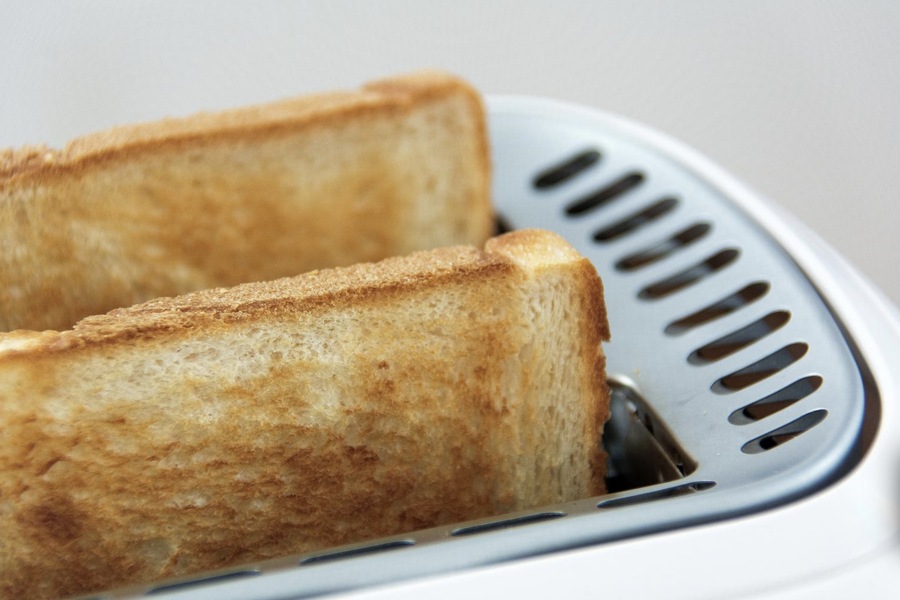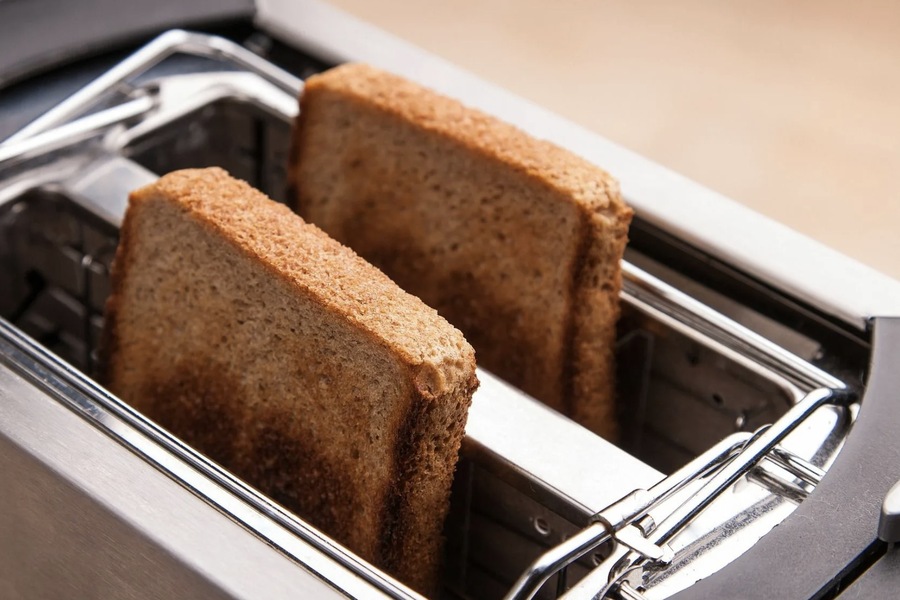Bread, one of humanity’s oldest and most beloved foods, has a rich and fascinating history that spans thousands of years. The art of bread baking dates back to ancient civilizations, with the Egyptians being the first known people to master it about 6,000 years ago. Bread quickly became a staple in various cultures, symbolizing sustenance and life. Over the centuries, the methods of preparing, preserving, and enhancing bread evolved, culminating in the practice of toasting—a culinary tradition that continues to this day. Today, modern toasters available from places like Kitchen Warehouse help keep this tradition alive, offering advanced appliances for perfect toasts every time.
The Origins of Toast: Ancient Egypt and Rome
The first known civilization to bake bread was the Egyptians, who developed sophisticated methods for preparing this staple. As bread became a key part of their diet, so too did the desire to keep it fresh for as long as possible. However, in the warm and humid climate of Egypt, bread would spoil quickly. To solve this problem, Egyptians discovered that removing moisture from bread could extend its shelf life. This practice was later perfected by the Romans, who would dry slices of bread over an open fire to preserve them. These dried bread slices, often used to soak up broth or sauces, were the first iteration of what we now know as toast.
Toasting became an effective way to make bread last longer, and it also improved the texture and flavor of bread that had become stale. The term “toast” itself originates from the Latin word tostum, which means “to burn” or “scorch.” For centuries, toasting bread remained a practical method for preservation, especially in societies that relied on bread as a dietary cornerstone.
Toast in English Cuisine: A Culinary Staple
As toasting techniques spread throughout Europe, it became particularly popular in English cuisine. Toast was often prepared in the kitchens of wealthy households by servants, who would hold slices of bread over an open flame using a fork or a special grate. The process was time-consuming, and by the time the toasted bread reached the master’s table, it was often cold and less fragrant. Despite this, toasted bread remained a cherished breakfast or snack, often served with butter, jams, or other toppings.
During the 19th century, the industrial revolution transformed the way food was prepared and consumed. The introduction of electric appliances began to revolutionize kitchens, and with it came the first steps toward modern toasting methods.

The Birth of the Electric Toaster: A Breakthrough in Breakfast
The history of the electric toaster is marked by innovation, with competing claims about who truly invented the first commercially viable model. One version credits the English company Crompton & Co. with inventing the first electric toaster in 1893. This device allowed bread to be toasted using an electric current rather than an open flame, a significant step forward in convenience and safety.
However, another popular claim is that the first electric toaster was introduced in the United States in 1909 by the American company General Electric. The launch of their toaster marked the beginning of a new era in home appliances. The advertising slogan for the toaster was “Breakfast—without going to the kitchen!” reflecting the luxury of convenience it offered. With this device, individuals could prepare toast in the dining room or even in their bedroom, enjoying fresh, hot toast without the need to visit the kitchen.
The Evolution of the Toaster: From Manual to Automatic
The first electric toasters were relatively simple in design. They featured exposed heating elements and required users to manually turn the bread to toast both sides. This required constant attention to avoid burning the bread, and users had to stay nearby to flip the slices and remove them at the right time.
A major breakthrough in toaster design came in 1919, when American inventor Charles Strite patented the first automatic toaster. Strite’s invention was revolutionary in that it toasted both sides of the bread simultaneously and included a built-in timer that would turn off the heating element once the bread was done. The most significant innovation was the spring mechanism that ejected the toast once it was browned to perfection. This advancement eliminated the need to constantly monitor the toasting process, allowing users to multitask during breakfast preparation. By 1926, Strite’s automatic toaster, manufactured by the Waters Genter company, became available for household use under the brand name “Toastmaster.”
With the introduction of automatic toasters, toasting bread became a convenient and efficient process, allowing families to enjoy perfectly browned toast every morning without the risk of burning it. By the 1940s and 1950s, electric toasters had become a common household item, solidifying their place as a must-have kitchen appliance.
The Rise of the Automatic Electric Toaster: A Morning Tradition
The 1940s and 1950s marked the golden age of the electric toaster, as more families across the world embraced this convenient device. With new automatic features, toasters became a fixture of the modern kitchen, contributing to the growing trend of easy, time-saving appliances. The morning ritual of toasting bread quickly became a symbol of home-cooked convenience, and the sight and smell of golden, crispy toast became synonymous with the start of the day.
The post-war boom in household appliances also saw toasters become more affordable and accessible to the average family. Manufacturers began to introduce different designs and features, including toasters that could handle various types of bread, from thin sandwich slices to thick artisanal loaves.
Capabilities of Modern Toasters: Technology Meets Tradition
Modern toasters have evolved far beyond their simple, early designs, incorporating advanced technology to meet the needs of today’s consumers. With multiple toasting modes, modern toasters offer unprecedented precision and control over the toasting process. From defrosting frozen bread to browning specialty loaves, modern toasters have become versatile appliances that can do much more than toast bread.
Some of the standout features of modern toasters include:
- Multiple Power Modes
Modern toasters come with different power settings to accommodate various types of bread. For example, higher wattages (up to 1200 W) allow for fast toasting, while lower wattages (400 W) are ideal for more delicate bread types, such as black bread or baguettes. The ability to adjust the power ensures that bread is toasted to the user’s preference without burning. - Defrost Function
Many contemporary toasters are equipped with a bread defrosting mode, allowing users to toast frozen bread directly from the freezer. This feature is particularly useful for those who buy bread in bulk or don’t have time to visit the bakery every morning. - Infrared Sensors
One of the most advanced innovations in modern toasters is the inclusion of infrared sensors that monitor the internal temperature of the bread. These sensors ensure that the toast is perfectly browned, regardless of the bread’s freshness or thickness. Infrared technology eliminates the guesswork of using a timer, making the toasting process more precise and reliable. - Automatic Lift and Ejection
Modern toasters are designed with convenience in mind. The “extra lift” function makes it easier to retrieve smaller slices of bread without burning your fingers, while the automatic ejection feature prevents over-toasting and ensures that the toast pops up when it’s ready. - Even Browning
To ensure evenly toasted bread, many modern toasters are equipped with an automatic bread-centering mechanism that positions the bread slices equidistant from the heating elements. This ensures that the bread is evenly toasted on both sides. - Safety Features
Safety has become a top priority for modern appliances, and toasters are no exception. Modern toasters are equipped with automatic shut-off systems that prevent overheating or burning, particularly when toast gets stuck in the machine. - Additional Functions
Some models even include specialized attachments for toasting items beyond bread, such as buns, croissants, or pizza slices. These attachments can turn a basic toaster into a multi-functional kitchen appliance that can prepare a wide variety of meals and snacks. - Crumb Trays and Cord Storage
To make cleaning easier, modern toasters often come with removable crumb trays that catch bread crumbs and prevent them from burning inside the machine. Many models also feature convenient cord storage options to keep kitchen counters tidy.

Toaster Ovens and Mini-Ovens: Expanding Possibilities
While traditional toasters remain popular, toaster ovens and mini-ovens have gained traction for their versatility and ability to do more than just toast bread. These compact appliances function as small ovens, capable of baking, broiling, and toasting a variety of foods. From reheating pizza to baking pies and roasting vegetables, toaster ovens are a practical addition to any kitchen.
In fact, some toaster ovens have become so advanced that they are referred to as “mini-ovens” or “roasters.” These devices feature horizontal toasting slots, which allow for the preparation of larger meals, including hot sandwiches, pies, pancakes, and more. Their versatility and space-saving design make them ideal for small kitchens or households looking to reduce their reliance on traditional ovens.
Where to Find Modern Toasters in the UAE
For those seeking the latest in toasting technology, the UAE’s Kitchen Warehouse offers a wide range of modern kitchen appliances. One standout model available is the Delonghi BRAD Toaster, priced at 472.50 AED. This toaster combines sleek design with high-performance features, making it a great option for those who want to enjoy perfectly toasted bread every morning. Kitchen Warehouse also offers a variety of new and used kitchen appliances, ensuring that there’s something for every budget.
The Timeless Appeal of Toast
Though the technology behind toasters has evolved dramatically, the simple pleasure of a perfectly toasted slice of bread remains unchanged. Whether you prefer a classic slice of toast with butter or a more elaborate topping like avocado or poached eggs, toast continues to be a beloved part of the breakfast experience. The humble toaster has transformed from a manual kitchen tool into a sophisticated appliance, offering precision, convenience, and versatility. From its early beginnings in ancient Egypt and Rome to its modern-day incarnations, the toaster has earned its place as one of the most essential and enduring kitchen gadgets in history.
Skydiver, feminist, band member, Mad Men fan and holistic designer. Acting at the crossroads of modernism and intellectual purity to craft delightful brand experiences. Let’s design a world that’s thoughtful, considered and aesthetically pleasing.
